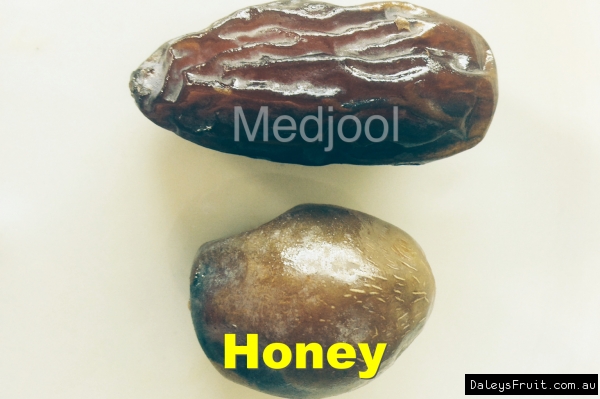
(1/8) Date barhee fresh
![The Honey Date]()
(2/8) The Honey Date
![Comparing the Medjool Date to the Honey Date]()
(3/8) Comparing the Medjool Date to the Honey Date
![Honey Date A bit extreme video about how good they taste and comparing to medjool]()
(4/8) Honey Date A bit extreme video about how good they taste and comparing to medjool
![How Australians Grow Date Trees]()
(5/8) How Australians Grow Date Trees By ABC Gardening Australia [All Rights Reserved] (Photo Credits)
![Leaf of the Palm Date Honey Barhee]()
(6/8) Leaf of the Palm Date Honey Barhee
![Palm - Date Honey Barhee For Sale]()
(7/8) Palm - Date Honey Barhee For Sale
![Palm - Date Honey Barhee For Sale]()
(8/8) Palm - Date Honey Barhee For Sale
fullscreen1
Palm - Date Honey Barhee
Phoenix dactylifera
The Honey Date Palm is the Barhee dates very famous nickname because the taste is of soft melting honey and caramel. It is not as famous as the Medjool Date possibly because it is not as big and much harder to be packaged, transported and stored due to ha... Read Moreving a lot more liquid in the flesh and easily bruised. So although it can not compete on practicality it can definitely match and better in it's honey like taste. By far the sweetest date variety. You need a Male and Female to pollinate and this can be done via the wind. Via the wind one male plant can pollinate a female plant but if space is a problem and you would rather more female plants than it might be best to pollinate by hand to ensure fruit set. Our palms are small seedlings and can not be purchased male or female. You need to wait until they flower to find out. They will take about 4-6 years to flower. We recommend a planting of at least three to increase your chances of having both a male and a female palm. If you get a long hot dry summer then dates are a must for your backyard. Also the cost of dates often exceeds $20 per kg so when you do get a big harvest it will be well worth it. Especially when these dates taste like honey and are much more unique and special than the Medjools. The name Barhee comes from the Arabic word barh meaning hot wind.
Other Names: Date with Texture like caramel
$29.90 ($24.00-$29.90 choose a size)
Preferred Climate Warm Temperate, Arid (Dry)
Grown From Seedling
Max Height (when in the ground with good conditions) 5-10m
Plants required to Pollinate 3 Plants (Male and Female)
Can it Handle Frosts? Yes
Amount of leaves in Winter? All Leaves (Evergreen)
Water Requirements Drought Hardy (Little Watering)
Is it a Dwarf Fruit Tree? No (Full Size)
Time to Fruit/Flower/Harvest 5+ Years
Sun or Shade Full (Sun:80%-100%)
Preferred Soil Type Good Drainage
Soil pH Neutral (6.6-7.3pH)
Fruiting/Harvest Months February, March

































